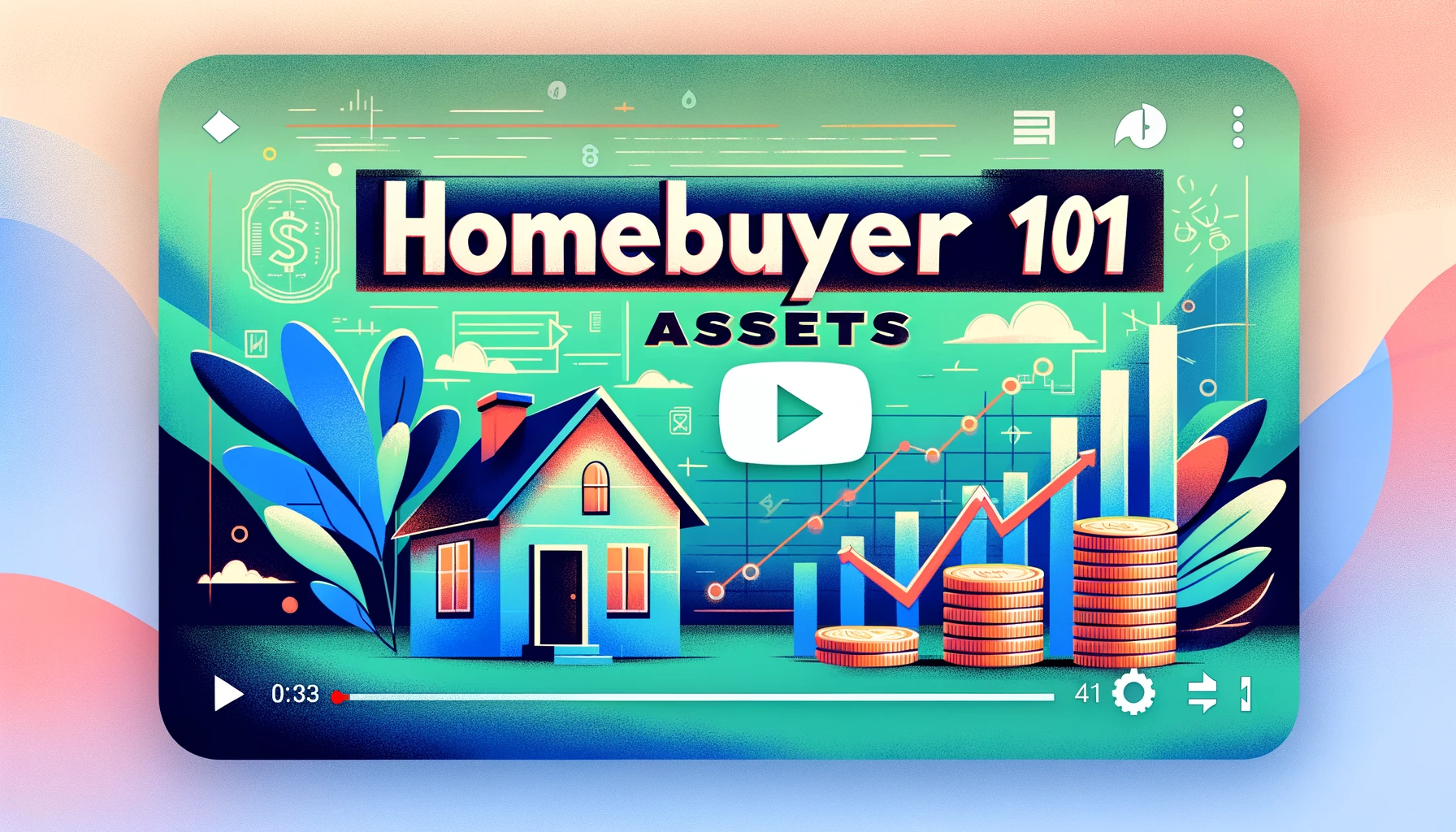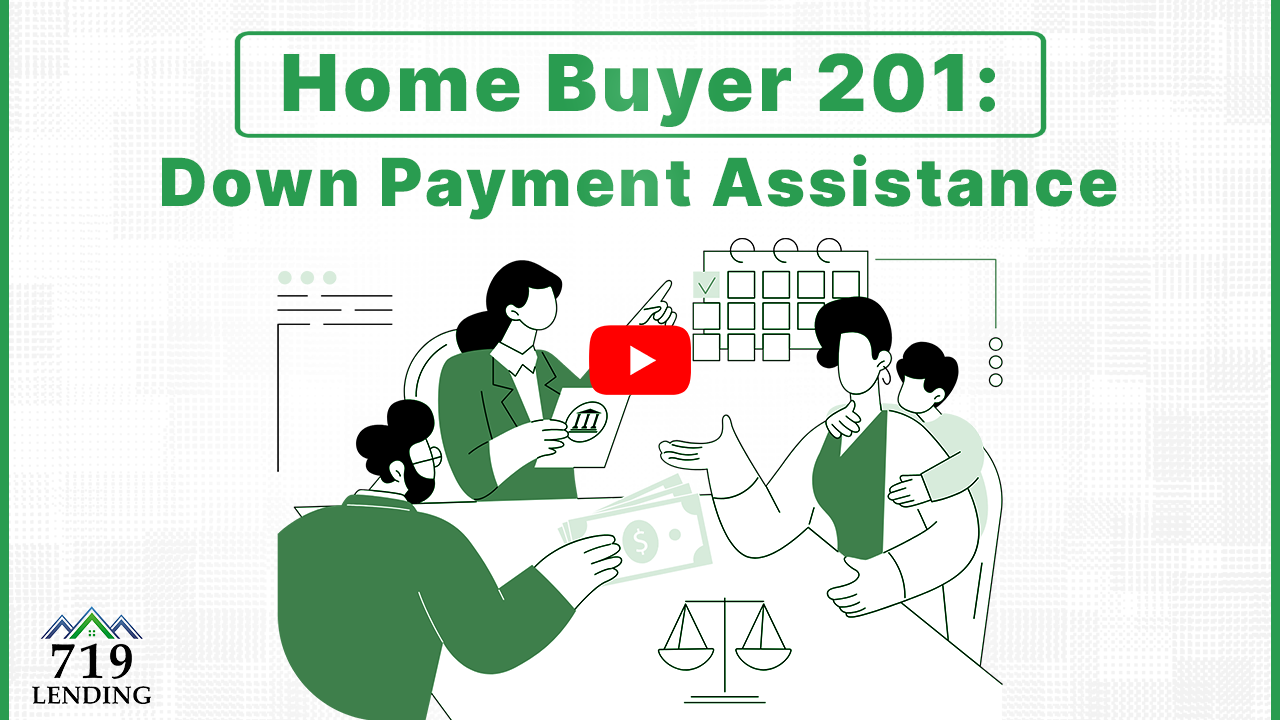6 minute lesson Lesson Summary Importance of timely document submission for your loan Types of…
Homebuyer 201: Rate Buydowns
Lesson Summary
-
Rate buydowns are a valuable option for homebuyers looking to lower their mortgage interest rates.
-
There are two types of buydowns: temporary and permanent.
-
With a permanent buydown, extra funds are used to lower the interest rate for the entire duration of the loan.
-
A temporary buydown offers a lower rate for a specific period, such as 3 years, 2 years, or 1 year.
-
Homebuyers can also use seller concessions to buy down their rate.
-
It’s important to consider the cost of the buydown and the potential savings before making a decision.
-
Consulting with a loan officer can help determine the best buydown option for your financial situation.
Navigating the waters of home financing can be like steering a ship through unfamiliar seas: you need a seasoned captain and a clear map to your destination. Rate buydowns offer such a navigational tool, presenting homebuyers with options to save on interest over time.
Rate buydowns remain somewhat of a hidden gem.
As of today’s dynamic financial climate, understanding the nuances of your mortgage options, including the concept of rate buydowns, can significantly impact your long-term homeownership journey.
Understanding Rate Buydowns
Rate buydowns are a clever financial move where you pay extra upfront to lower your mortgage rate. Think of it like paying a little more at the beginning to get smaller monthly payments on your house loan. There are two main types: permanent and temporary.
With a permanent buydown, you pay this fee once, and your interest rate stays low for the entire time you’re pay your mortgage. It’s a bit like investing a bit more upfront to enjoy reduced payments for a long time.
On the other hand, a temporary buydown is more like getting a short-term discount. With this, you enjoy a lower interest rate for a limited time, usually between one to three years. After that, your rate returns to the original amount. This option can be beneficial, especially if the seller of the house is willing to cover part of the upfront fee. The cost of this fee is exactly equal to the amount you save on your payments. For example, if you’re saving $10 per month for ten months, the upfront cost would be $100. Essentially, with a temporary buydown, you’re paying some of the interest in advance.
The Basics of Buydowns
Rate buydowns offer you the possibility to lower your mortgage interest rate by paying an upfront fee, potentially saving you money over time. This strategic financial option comes with two distinct flavors: permanent and temporary.
Permanent buydowns are akin to a long-term investment in your property’s affordability. You pay upfront to lock in reduced interest rates for the entire lifespan of your loan. It’s a forward-looking move, harmonizing with your financial vision.
Paying more now could mean paying less overall on your mortgage.
With temporary buydowns, you’re taking a shorter-term position. Your interest rate decreases for a set initial period, after which it climbs back to the original rate. This flexible strategy can be tailored to your current financial landscape and future expectations.
Temporary vs Permanent Options
When considering buydowns, it’s crucial to weigh the benefits of temporary rate reductions versus lifelong savings. A temporary buydown offers initial relief, potentially easing you into homeownership by providing a lower payment in the first few years.
A permanent buydown, on the other hand, means enduring advantage. Your lowered rate stays fixed, unchanged over the loan’s full term, offering consistent monthly savings.
Temporary buydowns might be apt if you anticipate an income increase or intend to refinance in the near future, thereby taking advantage of lower initial payments.
Opting for a permanent buydown typically suits those planning long-term residency, willing to invest upfront for sustained economic benefit.
With temporary options, the buydown cost and the duration of the reduced rate greatly influence the financial effectiveness of such an arrangement. Ensure you analyze your break-even point when considering this route.
Ultimately, your choice should align with your financial strategy and housing plans. A loan officer can provide invaluable counsel, helping you assess which path yields the most fiscal advantage.
Evaluating the Costs
When dissecting the financial feasibility of a rate buydown, examine the upfront expenditure versus the long-term savings. A meticulous cost-benefit analysis is paramount. This involves calculating how long it will take for the reduced monthly payments to offset the initial buydown cost—a crucial step known as determining the “break-even point.” For a permanent buydown, consider the cumulative interest savings over the life of the loan against the lump sum payment made. With a temporary buydown, factor in the limited time span of relief and possible changes in your financial landscape. Transparency about your financial stability and how long you plan to inhabit the home will guide your decision on whether the buydown costs are a worthy investment.
Calculating the Buydown Price
To determine the precise cost of a rate buydown, several factors must be carefully considered and calculated.
- Identify the Current Market Rate: Establish the prevailing interest rate for your loan type without a buydown.
- Select Your Desired Rate: Decide the target interest rate you aim to achieve through the buydown.
- Communicate with Your Lender: Obtain the lender’s buydown rate sheet, detailing the cost for each rate reduction increment.
- Calculate the Difference: Compare the current market rate with your desired rate to understand the total reduction needed.
- Determine the Points: Calculate how many points (prepaid interest) you need to pay to hit the desired rate.
- Do The Math: Multiply the number of points by the loan amount to find the total buydown cost.
Securing a precise figure is essential for budgeting and making informed decisions.
A strategic approach will ensure your buydown aligns with both immediate and long-term financial objectives.
Determining Long-Term Savings
Long-term savings are the real prize.
Consider the long-term impact of a lower interest rate. By reducing your interest rate through a buydown, you’re not only lowering your monthly payment, but you’re potentially saving tens of thousands of dollars over the life of your loan. This saving is critical when thinking about financial stability and wealth accumulation.
Weigh the upfront costs versus enduring benefits.
Evaluate the break-even point. This is the time it will take for your monthly savings to surpass the initial costs of buying down the rate. If you plan to stay in your home beyond this period, the long-term savings could be substantial.
Assess the benefits in the context of market volatility. With interest rates subject to change, locking in a lower rate could shield you from future hikes. Consider your home as a long-term investment where market stability can play in your favor.
Projecting these savings requires a keen understanding of your financial trajectory. Partner with your loan officer, and remember the amortization curve favors the patient homeowner who values the wisdom of a long-term investment.
Strategic Use of Seller Concessions
Seller concessions can be a powerful tool in your home-buying strategy. They offer flexibility in financing that can be applied toward closing costs, or more creatively, to a rate buydown. Using concessions to lower your rate could mean a more manageable monthly mortgage payment.
Thoughtful allocation of seller concessions can maximize your home purchase benefits. It’s critical to balance immediate affordability with the long-term value of a reduced interest rate. Engage in discussions with your loan officer to optimize the impact of any concessions you negotiate.
Applying Concessions to Interest Rates
Concessions, when positioned strategically, can mitigate your mortgage’s expense, transforming them into a vehicle for a more favorable interest rate, securing long-term savings that support your financial health.
Negotiating seller concessions is akin to an art form within the home buying process, yielding tangible value far beyond the closing table.
Harnessing the seller’s willingness to contribute can result in significant interest savings, given proper channeling (like directing said concessions toward rate buydowns) and strategic utilization.
These targeted funds can effectively decrease your borrowing costs, potentially saving you thousands over the life of the loan, hence the allure of orchestrating a rate buydown.
Imagine reducing your interest rate through strategic concession allocation, reshaping your mortgage landscape to support both short-term affordability and long-term financial goals, striking a balance advantageous for home ownership.
Ultimately, your decision to apply concessions to interest rates hinges on your long-term housing plans. Careful deliberation with your loan officer ensures concessions translate into meaningful mortgage relief.
Impact on Mortgage Affordability
Rate buydowns directly influence the affordability of your mortgage each month. Lower interest rates lead to reduced monthly payments, enhancing your cash flow.
By opting for a rate buydown, you’re essentially paying upfront to lower your future mortgage payments. This move can widen your purchasing power, allowing you to consider homes that may have been initially out of reach. The upfront cost can be substantial, but the monthly savings on mortgage payments will accumulatively offset this over time, particularly in a permanent buydown scenario.
Temporary rate buydowns offer an immediate reduction in interest costs. This approach is especially beneficial if you’re anticipating an income increase or improved financial circumstances in the near future. You’ll enjoy lower payments at the start of your mortgage when extra budgeting flexibility can be crucial.
On the other hand, a permanent rate buydown adjusts your interest rate for the entirety of your mortgage term. This can result in significant long-term savings but requires a larger initial investment. Whether this strategy is prudent depends on your financial stability, the time you plan to stay in the home, and your tolerance for upfront costs compared to future benefits.
Consulting with Loan Officers
Navigating rate buydowns demands partnering with a knowledgeable loan officer. They can forecast long-term savings vs. upfront costs to guide your decision.
Depending on your financial goals and resources, a loan officer will advise on the suitability of permanent or temporary rate buydowns. They consider future plans, affordability, and the impact of current market rates on your mortgage.
A trusted loan officer can make or break your buydown strategy. Their insight ensures your investment aligns with your homeownership horizon and financial outlook.
Navigating Financial Considerations
Evaluate your financial landscape.
When considering rate buydowns, robust analysis is vital. An exhaustive review of your financial health will steer decisions, tailoring whether a permanent or temporary rate modification is fiscally shrewd.
Account for your homeownership timeline.
Your break-even point is paramount in this calculus. Knowing when you’ll recoup the buydown cost influences your strategy.
Weigh immediate costs against long-term savings.
Don’t overlook rate volatility—today’s market could shift swiftly. Ensure your home financing reflects a keen awareness of the present and an astute eye for the future.
Understand market dynamics before committing.
Armed with knowledge, make a choice that harmonizes with your financial narrative. Whether it be temporary relief or perennial stability, select a path that sustains your economic wellbeing.
Cost
Permanent Buydown Cost: for permanent buydowns you’re affected by market movements. You’ll need to connect with your Loan Officer, as the amounts can change daily due to market fluctuations.
Temporary Buydown Cost: Temporary buydowns involve paying the total amount of your monthly savings upfront at closing. This lowers your monthly payments by the amount of interest you’ve prepaid. It’s common to use seller concessions for this type of buydown. Think of it as the seller prepaying a portion of your interest for a few years. This can significantly reduce your monthly payments during the initial years of homeownership. To see the cost for this buydown, visit our “Temporary Buydown” calculator here: Calculate




